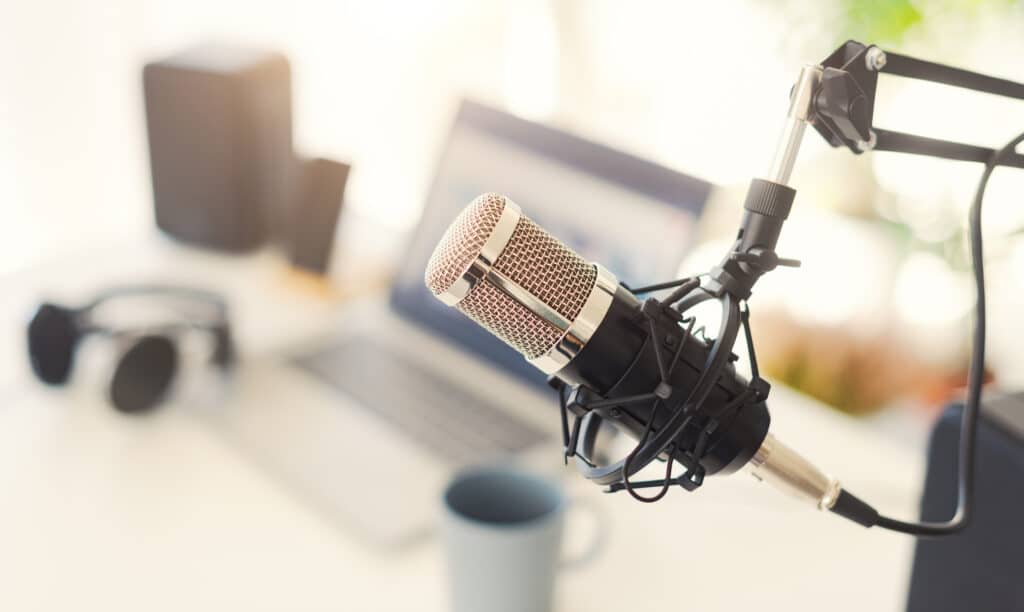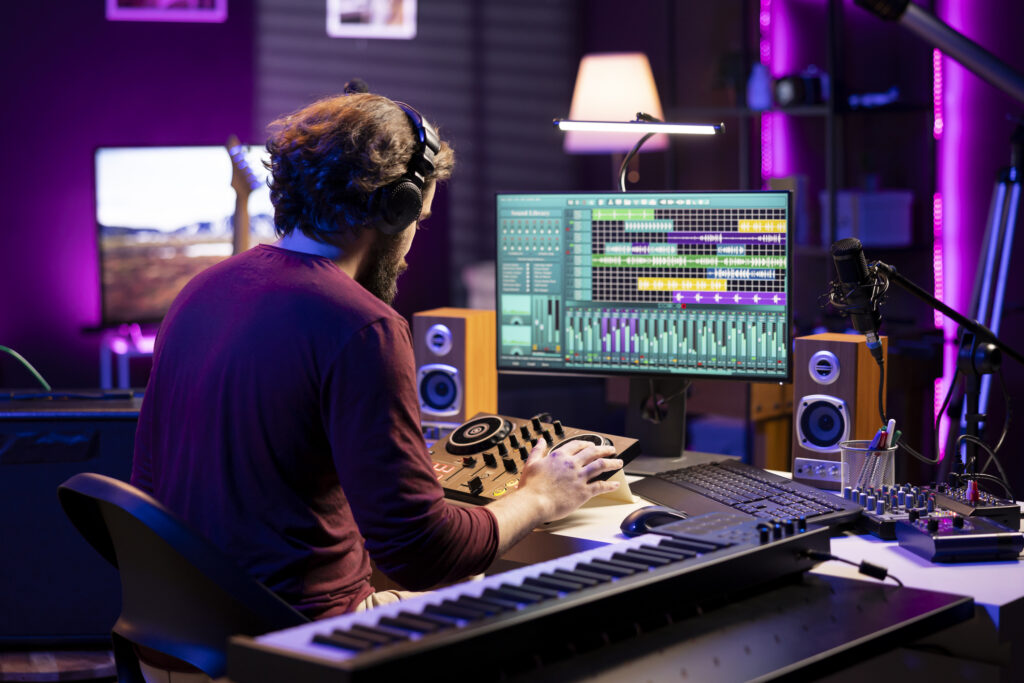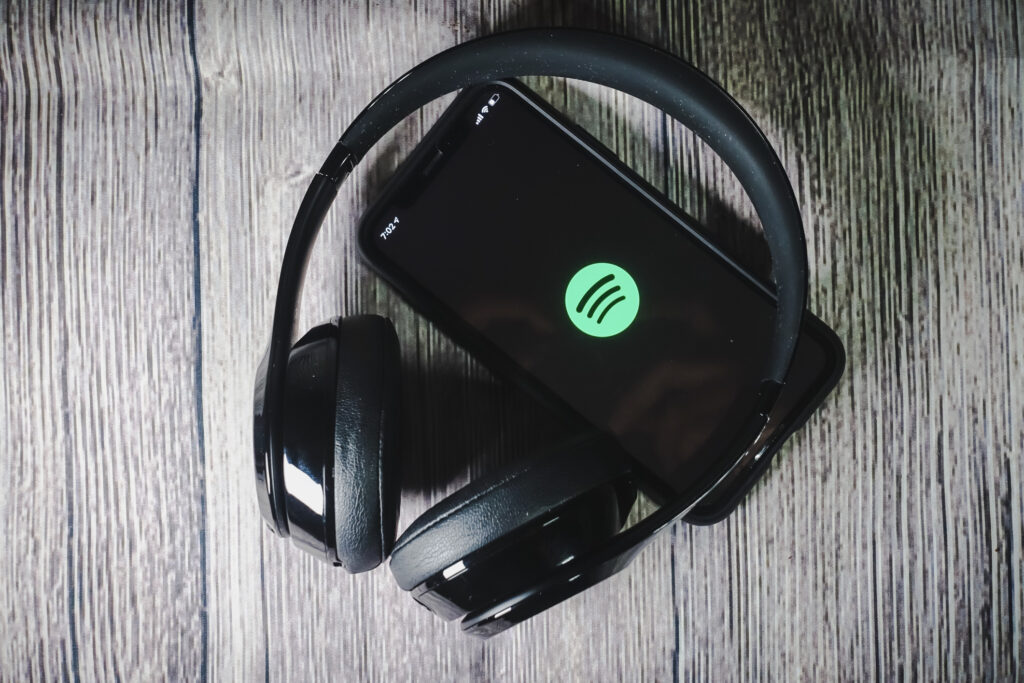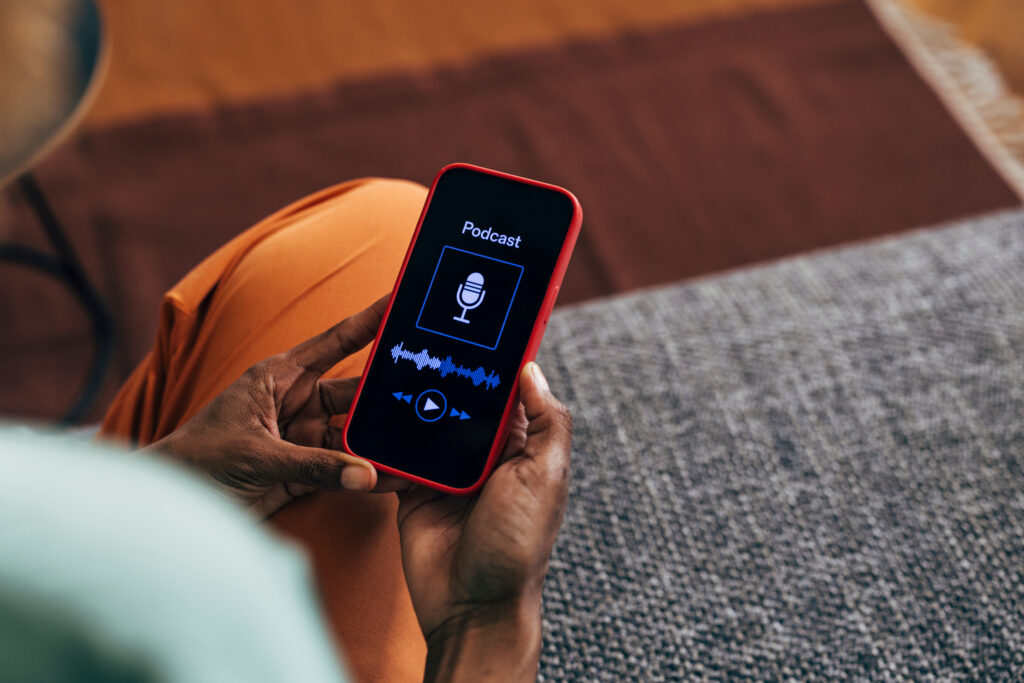Why Podcast Editing Software Is Not Enough
09/08/2025
The Software Myth | Why Podcast Editing Software Is Not Enough
It seems like everyone and their neighbor has a podcast these days. The barrier to entry has never been lower. You can grab a USB mic, download GarageBand or Audacity for free, hit record, and you’re officially a podcaster. On paper, that’s exciting. In reality, though, it creates a problem.
A lot of shows never get past sounding amateur. Not because the hosts aren’t smart or passionate, but because software can’t replace a trained ear and professional production.
That’s what this blog is about: breaking down why free or cheap editing apps aren’t enough, why listeners care more than you think, and why professional podcast producers are the difference between a podcast people tolerate and one people binge.

1. Tools Aren’t Talent | Why Podcast Editing Software Is Not Enough
Let’s start with the obvious. Owning Photoshop doesn’t make you a graphic designer. Having a fancy Nikon doesn’t make you a photographer. And downloading GarageBand doesn’t make you an audio producer.
Software is just that — a tool. A hammer won’t build a house without someone skilled enough to swing it. GarageBand, Audacity, or Descript can help clean up some noise, but they don’t magically understand pacing, tone, or what makes voices blend naturally.
A professional producer does:
– We know when to leave in a breath to keep a conversation human.
– We know how to cut out a filler word without making the edit obvious.
– We know when to let silence sit for effect versus when to tighten it up.
These are judgment calls. You can’t hit a button for them. And they’re what make a podcast sound intentional instead of choppy.
Think of it this way: you could bake bread with flour, water, and yeast. Or you could go to a bakery where the baker has spent years perfecting recipes, crusts, and textures. Same ingredients. Totally different result.
2. Sound Quality = Listener Engagement
Here’s where the numbers back it up. Audio quality is not just about vanity — it directly impacts whether people keep listening.
Stat #1: Audio quality has a 95% engagement impact and a 90% retention/view impact. That’s higher than almost every other factor in podcasting.
Listeners don’t stick around for fuzzy recordings, uneven volume, or echo chambers. Even if your content is brilliant, if people have to work to understand you, they’ll drop out.

Think about your own habits. How many times have you clicked off a YouTube video because the audio was bad, even if the topic interested you? Podcast listeners are even less forgiving because it’s all audio.
Professional producers know how to:
– Remove background hiss and hum without flattening the voice.
– EQ voices so they sound natural and warm, not tinny or muffled.
– Balance guest and host levels so one doesn’t sound like they’re yelling while the other whispers.
– Add compression for a radio-like smoothness without sounding over-processed.
This is the stuff that keeps people listening past the first two minutes. And if they don’t stay? Your podcast doesn’t grow.
3. Clarity Builds Credibility
Here’s another stat that matters:
Stat #2: Research from USC and the Australian National University found that poor audio quality erodes trust. Even when the information was identical, people rated low-quality audio as less credible (podcastersunited.org).
That means it’s not just about sounding nice, it’s about how your audience perceives you. If your podcast has muddy sound, your listeners subconsciously assume you’re less knowledgeable, less trustworthy, or less professional.
In business podcasts, that’s huge. You could have a doctor explaining medical advice or a lawyer breaking down contracts, but if the audio is bad, people believe them less.
Professional editing fixes that. It makes your podcast sound like it belongs alongside NPR or the New York Times, not like something recorded in a garage. And when you sound polished, your words carry more authority.
4. Consistency is King
Now let’s talk about consistency. Anyone can cobble together one decent episode. The problem is doing it week after week.
Stat #3: Podcasts that release consistently every week for six months see 320% more audience growth compared to irregular shows (propodcastsolutions.com).
Consistency builds trust. Your audience learns to expect not just new episodes, but a consistent sound. If one episode is crisp and clear and the next sounds like it was recorded in a tunnel, they’ll notice. That’s when they start skipping and skipped episodes eventually mean unsubscribes.
Professional producers bring that consistency. We don’t just edit; we set up templates, workflows, and standards so every episode feels like part of the same show. That’s what keeps subscribers loyal.

5. The Hidden Work Behind “Simple Editing”
People underestimate how much time editing really takes. Sure, GarageBand lets you slice and delete. But here’s what pro editing actually involves:
– Reviewing raw audio start to finish.
– Cutting filler, tangents, or interruptions.
– Balancing levels between voices.
– EQ and compression for clarity.
– Noise reduction without killing the natural tone.
– Inserting music, transitions, or ads.
– Final mastering so it’s consistent across devices.
A one-hour raw recording can easily take 3–4 hours to edit properly. Multiply that by four episodes a month, and suddenly you’ve got a full-time side job just making it sound right.
That’s why hiring a producer isn’t just about sound. It’s about buying back time. You record, you hand it off, and you get a polished product ready to publish.
6. Why Software Can’t Replicate Judgment
The other thing software can’t do? Judge.
AI editing tools are getting better, but they’re still robotic. They don’t know which “um” makes a speaker relatable versus which one is distracting. They can’t decide whether to keep laughter to show chemistry or cut it to keep pacing tight.
Those are human calls. A producer listens like a listener. We hear what works and what drags. And we make decisions based not just on the waveform, but on how it feels.
7. The Listener Experience is the Brand Experience
When people listen to your podcast, they’re forming an impression of you or your brand. Do you sound credible, trustworthy, worth following? Or do you sound like you cut corners?
If your podcast supports your business, this matters even more. Imagine a financial advisor running a podcast with tinny audio. Would you trust them with your money? Probably not.
Professional production makes you sound like you take yourself seriously. And when you sound professional, your audience treats you like a professional.

8. Case Example — The Difference Polish Makes
Let’s imagine two podcasters.
– Podcaster A records with GarageBand. They cut out long pauses, add some intro music, and upload. The sound is uneven. Their guest is quiet, they’re loud, and the background hum is distracting. Their show gets a few listens but not many repeat subscribers.
– Podcaster B works with a producer. Their voices are balanced, the flow feels natural, and the show sounds like it belongs on the front page of Spotify. The difference? Listeners recommend it. They subscribe. Advertisers start paying attention.
Same mic. Same raw recording. The difference is production.
9. Pricing — What’s Fair?
So is Outcast Media’s $190 per episode a fair rate? Absolutely. Agencies charge anywhere from $350 to $1,000+ per episode for similar services. Even freelancers charge $100–$250 for basic editing.
10. What Creators Actually Get at That Price
When creators pay for production, they’re not just buying “editing.” They’re buying peace of mind. They’re buying back hours of their week. They’re buying a podcast that sounds polished enough to compete with the big players.
And you can position it like this:
– You record.
– You hand it off.
– You get back a finished episode that’s show-ready.
No headaches. No guessing. No wondering if this week will sound better or worse than last.
So, What is the Final Verdict?
At the end of the day, GarageBand is a tool. It’s like giving someone a canvas and some paints. They might make something decent. But if you give the same tools to an artist, you get a masterpiece.
Software doesn’t shape a podcast. Producers do. And if you want people to listen, trust, and keep coming back, professional production isn’t an upgrade — it’s essential.
So if you’re weighing whether to stick with free apps or invest in a producer, remember: the right sound isn’t just nice to have. It’s what separates the podcasts people scroll past from the ones they subscribe to.
Ready to Take Your Podcast from Amateur to Pro?
Don’t let your show get lost in the noise. GarageBand can’t give you polished storytelling, but a professional producer can. For just $189.99 per episode — or $570 for four episodes a month — you’ll get crisp, consistent, and engaging audio that keeps listeners coming back.
🎙️ You record.
🎧 We produce.
🚀 You grow.
Let’s make your podcast sound like it belongs on the front page of Spotify.
Let’s get talking!
Enter your e-mail to connect and let’s make some noise.